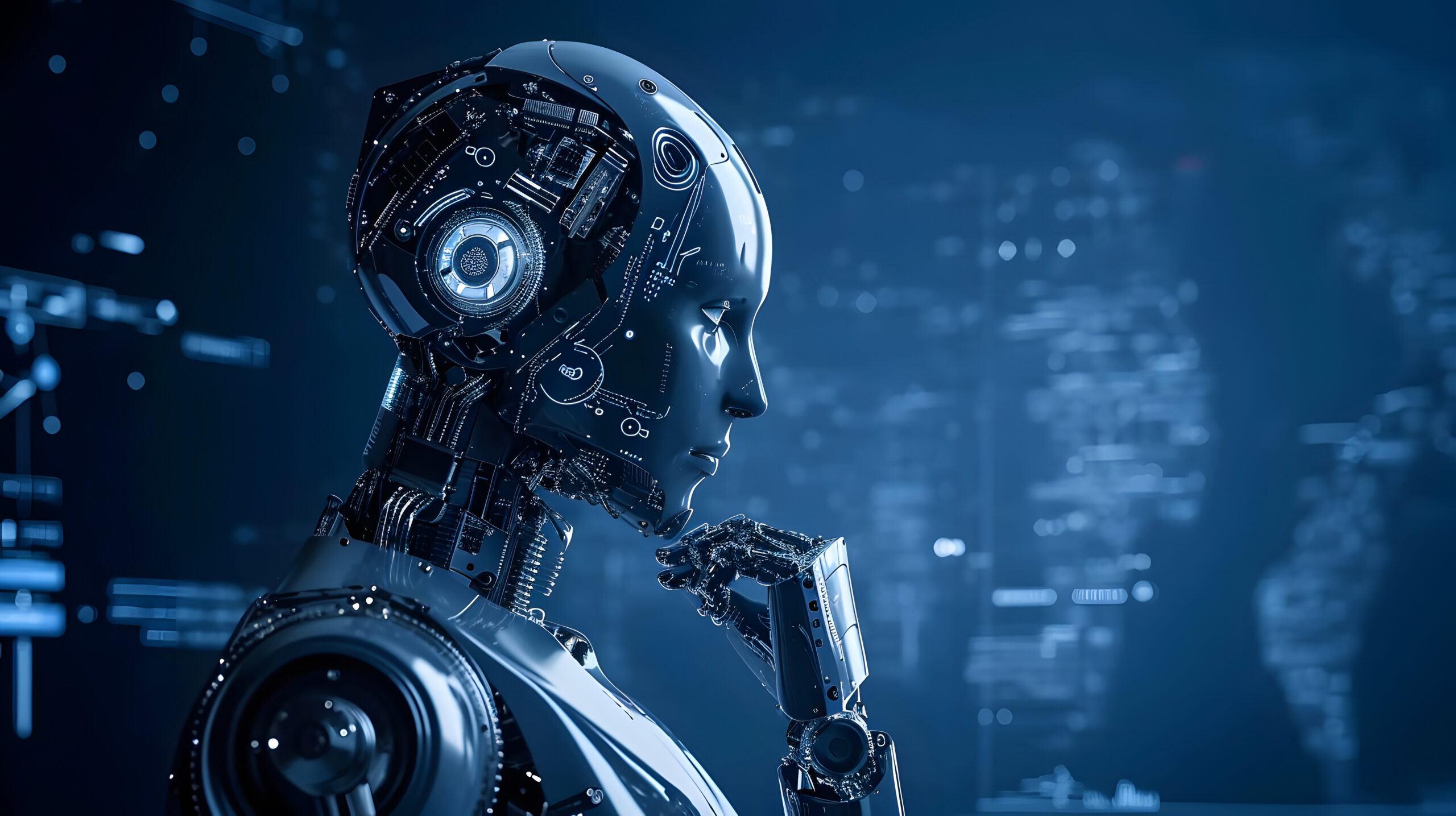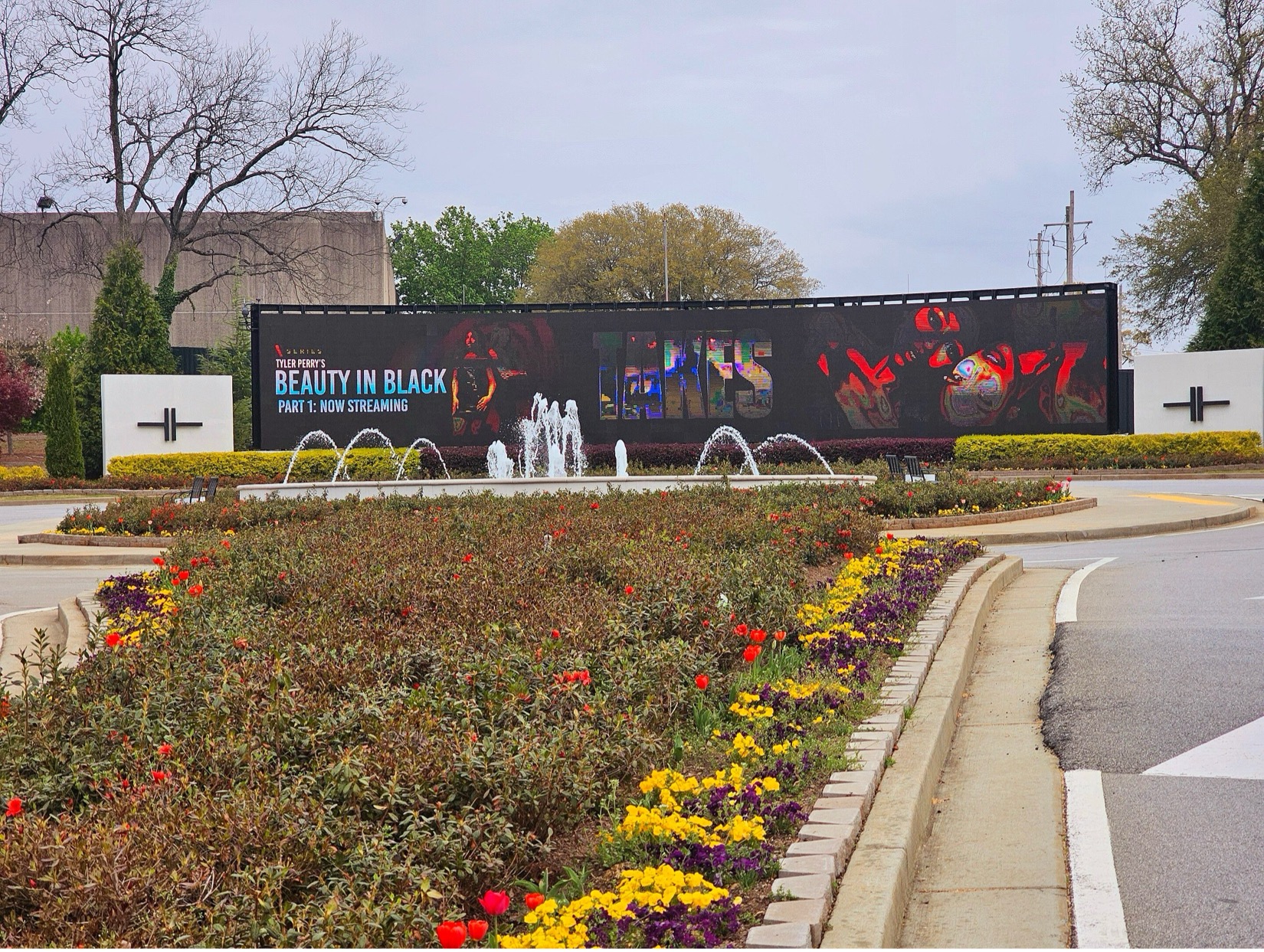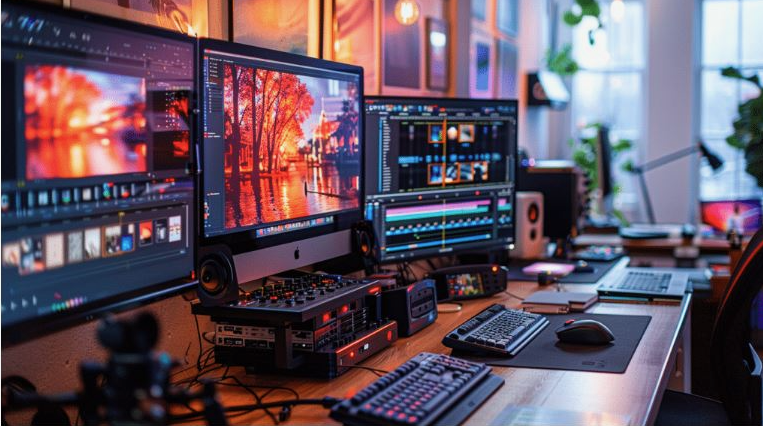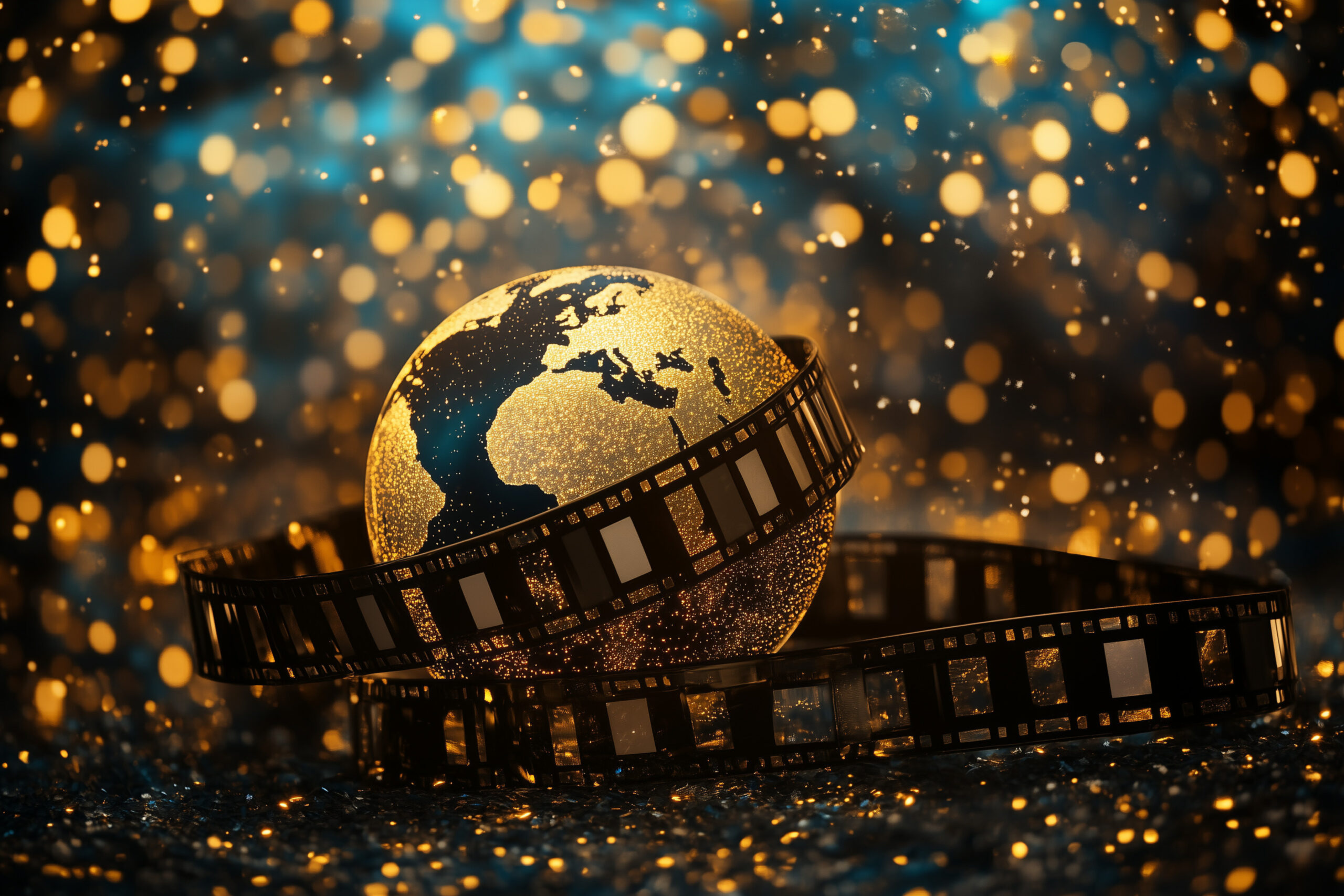In the entertainment industry, AI is proving beneficial for some tasks, particularly those that are costly and time-consuming. However, when it comes to creative aspects, well, that is not a task for which AI is well-suited.

“Today’s a training day. Show you around, give you a taste of the business. I ain’t babysitting. You got today and today only to show me who and what you’re made of.” – Alonzo Harris, “Training Days,” 2001, Warner Bros.
Let’s start this discussion by being perfectly clear: We aren’t an AI or tech expert! But, we are a pretty good student of history, people, human nature. Right now, we have a flurry of fantastic, mind-boggling, wishful thoughts/statements from “experts” on how AI is going to sweep through the video content industry, doing everything mere mortals can do but better, faster, cheaper.
Industry executives are saying everyone is doing it/using it; and if we don’t get ahead of the game, we will be….
Writers, actors, camera operators, crew, postproduction, and others hear the noise that is so overwhelming.They know stuff slides downhill, and it’s aimed right at them. We have developed, refined, introduced, and used new technology, and sometimes it has been awkward and messy, but things got better. Quills replaced chisels, pens replaced quills, typewriters replaced pens, computers replaced typewriters—each time eliminating some jobs but also creating new/better/different jobs. Yes, AI will, and is, changing the industry and some jobs will disappear, while new ones emerge—just as they have since the first silent film recorded in 1888 by Louis Le Prince. Progress in any area sparks anxiety regarding the dangers of the unknown, but each time people have proven they are equal to the task. We have never had zero-sum results.
AI already powers many functions/activities in the industry in ways we often don’t realize or simply take for granted. But it isn’t anything that can be approached and used with blind faith. It needs people to use it with logic, caution, and skepticism. We know, that’s the tough part.
AI has the potential to streamline the writing process—prepping loglines, mapping pitches, developing script outlines, and, eventually, even first drafts. AI can’t produce a totally new original idea… yet. What it can do is rapidly sift through the volume of ideas/concepts/stories and help showrunners, writers, and others break free of the mental blocks and offer creative sources for the storyline they were struggling to bring to the surface so the work can flow. This is precisely what Netflix has been doing very successfully in recent years by sifting through volumes of subscriber data and providing the creative teams with a germ of an idea and loose outline of what people find addictively interesting. The new/different idea emerges, is developed/refined, created, people watch, they tell others, and they watch.

BAM! We have a series/movie that everyone on the team can be proud of, and the viewing public is satisfied. Ultimately, that’s where the rubber meets the road. Writers will be in the best position to interpret and use the AI-generated content effectively because they have a deep understanding of the stories and sensibilities that need to be developed, nurtured, and projected. At the same time, we have to recognize that the above process also reduced the number of people in the writers’ room and the number of openings for future film/show writers.
When it comes to the actual AI production, industry professionals are still feeling their way around the room in the dark. Both Tyler Perry and Tom Hanks experienced firsthand how the technology will affect them as executives and actors. Perry put a planned $800 million studio expansion of his Atlanta-based facilities on hold because with the application of the technology, adding large soundstages didn’t appear to be a sound investment—at least for the near future. With advanced virtual LED sets, environments can be created with text rather than physically constructing them or even going to the expense of traveling to locations saving time and money. And it could do it all, while reducing crew size and staffing expenses.

Perry noted that he had been using the technology in two of his upcoming films that enabled him to age his characters quickly for shoots, rather than sit through hours of aging makeup.
And at the end of last year, Sony released the Robert Zemeckis film Here, starring Tom Hanks and Robin Wright, which all agreed couldn’t have been made a few years earlier. The story skips back and forth through time, focusing on the couple and their lives in their 20s, at various other periods, and to their late 60s. To do the project the conventional way would have required hundreds of VFX artists, a major budget, and months of postproduction work. With a few keystrokes, the actors could be aged, de-aged, and taken back and forth in time, appearing as they had at virtually any point in their lives. All of the production was done in almost real time.
Of course, the processing used in Here can just as easily be used to appropriate an actor’s likeness, even resurrecting someone. This has caused a lot of actors to have their lawyers pore over their contracts and other legal documents to protect and extend their ability to earn money with their image/voice well into the future.
While others in the content development, production pipelines have been dipping their collective toes in the use of AI, folks with the greatest burden have been learning and using it over the past few years, thanks to the careful, cautious introduction of the technology in postproduction tools. Arguably, in our opinion, the toughest and most labor/time-intensive part of video content production and postproduction is where all the magic happens—it turns a massive amount of raw footage into the masterpiece people see on the big, medium, and small screen. In other words, it’s where all the real magic takes place, enabling folks to do their work faster, more efficiently, and more effectively.

Tools like Adobe’s Sensei use machine learning to automate tedious and meticulous jobs, like editing to sync footage, select shots, and assemble rough cuts. It also helps editors remove objects and stabilize scenes. Sound editors have made it faster and easier to create realistic soundscapes as well as categorize and retrieve the sounds they need for the project from their sound libraries. Also, Blackmagic’s DaVinci Resolve’s AI technology also enables production teams to automatically color-correct footage by analyzing the color balance of the individual shot and surrounding footage.
Recently introduced VFX tools enable the teams to rapidly generate even the most complex film/show effects and even suggest optional effects to improve the project. But perhaps the most widely used, and appreciated, capability of AI that has been almost universally adopted has been localizing content rapidly, efficiently, and cost-effectively.
“Today, almost every film and show that is created is done with the idea that content owners and producers want to have people appreciate the project in their home country, but more importantly, have the film/show seen by folks around the world,” Allan McLennan, CEO of Padem Media Group, noted. “Historically, only major films localized their content for target markets. For example, Avatar 2 was localized in 47 languages when it was released, which would have been very expensive—[in terms of] time and money—without the use of AI. However, by using AI to transcribe the audio, translate the text, generate subtitles, create voice-overs, and even do creative voice and lip dubbing, James Cameron was able to allow nearly everyone everywhere to experience and appreciate the film. Localization played a key role in the film delivering more than $2 billion in ticket sales.”
McLennan pointed out that localization has been a major part of streaming services such as Netflix, Apple, Amazon, and Disney as they expanded their entertainment networks to more than 190 countries around the globe. It’s worth noting that to provide their services in the various countries, they also have to commit to developing as much as 30% of their films/shows locally. And AI has completely revolutionized localization, which has historically relied on manual transcription and translation processes.
McLennan noted that with the right AI tools, captioning a project can be fully automated—listening to the audio, turning it into text, and syncing the text with the audio—making the localization of virtually any project, regardless of budget, affordable.
“Cost is no longer a barrier for content producers in India, Brazil, Japan, Mexico, Nigeria, or virtually any country to make their films/shows available to audiences in countries such as the Americas,” McLennan emphasized. “As a result, we are seeing more international films/shows available in the US and vice versa, thus improving the understanding of each other in today’s global audience.”

There’s a lot of concern among creatives regarding the pros and cons of using AI in the video content industry; and most of the concerns are well-founded. But a tool that enables the industry to bridge the gap between different countries, different cultures, and different languages isn’t one of them, in our opinion.
At the same time, the industries—tech and film—have to take slow steps in determining where the technology can be used to enhance, improve, and multiply professionals’ abilities to develop and deliver interesting and diverse content that appeals to audiences across the spectrum and around the world. Creativity needs to unlock and use advanced technologies as they have in the past—to make great films/shows even better.
We’ve all heard the bold techies claiming that someday AI will be able to create a film all by itself, but we continue to believe that they are continuing to blow smoke. It certainly isn’t there yet, and if they do get their tools to develop the project, we’re pretty sure we’re not going to be interested in watching it because it will undoubtedly lack the key ingredients: emotion, empathy, and feeling.
As AI continues to be advance and improve, it’s important to remember what Alonzo Harris said in Training Days, “To protect the sheep, you gotta catch the wolf, and it takes a wolf to catch a wolf.” Ultimately, people, not technology, decide the future.
LIKE WHAT YOU’RE READING? INTRODUCE US TO YOUR FRIENDS AND COLLEAGUES.